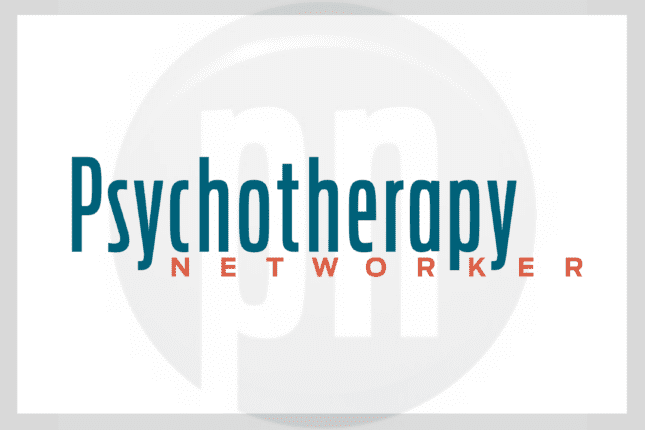Q: I’ve heard that research is beginning to show that neurofeedback can be effective in treating trauma. How does it work?
A: Neurofeedback was first developed almost 60 years ago to help patients control epileptic seizures by learning to regulate their brain activity. In addition to seizures, mainstream neuroscience is now showing us that a wide variety of psychological disorders and severe emotional turmoil can be understood as firing mistakes in the electrical activity of the brain. Neurofeedback has developed into an increasingly sophisticated technology, which can teach people to make changes in their brain’s activity to eliminate symptoms of conditions including bipolar disorder, attention disorders, anxiety and phobia disorders, depression, autism spectrum disorders, personality disorders, and post-traumatic stress disorder (PTSD).
Wave frequencies in the brain underlie every thought and feeling we have, as well as the behaviors they give rise to. Typically, for example, when we make more alpha waves (the frequency of 8–11 Hz), we feel more relaxed and, with time and training, can learn to spend more time in relaxation states as our default mode of brain activity. If someone with attention deficit disorder needs to pay better attention, they can learn to make more beta waves (15–18 Hz) and get better at maintaining focus. Simply put, the neurofeedback practitioner—ideally also a psychotherapist—assesses the client’s clinical needs, selects the target brain frequencies to address the presenting problems, and provides feedback so that clients can learn how to make more of the selected electroencephalogram (EEG) frequencies and ameliorate unwanted symptoms.
To start the training, clients sit in a comfortable chair with sensors placed on their scalp and play a video game watching their own EEG signal shown on a computer screen. When they achieve the target frequencies while inhibiting the dysregulating frequencies (that is, very slow or very fast waves), they collect points in the video game. In one such game, frequencies are represented as space ships. Whenever clients make the desired frequency and inhibit those getting in their way, the blue ship (the target frequency) outpaces the purple ship (slow waves) and the yellow ship (fast waves). Ongoing feedback from the game functions as a reward, and as the training continues, a client’s brain will naturally seek more rewards, increasing the time spent in the target frequency. More detailed instructions are occasionally needed, but most of the time, as in all biofeedback, there is really only one general rule: relax and focus.
Clients learn quickly that trying too hard impedes their progress, as is the case in most of our endeavors, from meditation to creativity to athletic competition. The clinician can act as coach during the session, reminding clients to breathe, drop their shoulders, soften the muscles in their face, and gently focus. She can show them how the EEG reflects body tension or fear states and remind them to bring the signal back within the target parameters. In this way, clients receive direct feedback to the organ most involved in learning—the brain—in the language it most understands—its frequencies. A training session typically lasts about 20 minutes and for best results is done, at least initially, twice a week.
Most of the research in neurofeedback has been around epilepsy and attention deficit hyperactivity disorder. Recently, however, trauma researchers have become interested in the use of neurofeedback to help their clients learn to regulate their affect. In a randomized controlled trial, psychiatrist Bessel van der Kolk and his colleagues found a remarkable 40 percent drop in PTSD scores for a sample of treatment-resistant patients after 20 sessions of neurofeedback, compared to a wait-list control group. A 40 percent drop is far larger than most published clinical trials of other treatments for PTSD, particularly in treatment-resistant populations.
With PTSD, as with other psychological conditions, the brain, by its very nature, is biased toward its own regulation. Once it learns how to achieve a more regulated state, it has no incentive to revert to instability—its old, habitual firing patterns—and dysregulation. It’s difficult to predict how long any individual will need to learn this new capacity, but most people will discern some improvement within the first 5 to 10 sessions, some even in the first session. Every brain is unique, and neurofeedback protocols—the placement of the sensors and the target frequencies that the practitioner sets—are tailored accordingly.
Clearly, neurofeedback won’t appeal to all therapists. It requires investment in training and equipment—and more importantly, it requires embracing a new paradigm, a new way of thinking about the problems we encounter in our work and in ourselves. But for those to whom it does appeal, it rapidly becomes acknowledged as a powerful approach to affect regulation and a welcome addition to the clinician’s tool kit.
Sebern Fisher
Sebern Fisher, MA, BCN, is a psychotherapist and neurofeedback consultant in Northampton, Mass. Sebern is also the author of Neurofeedback in the Treatment of Developmental Trauma: Calming the Fear-Driven Brain.













